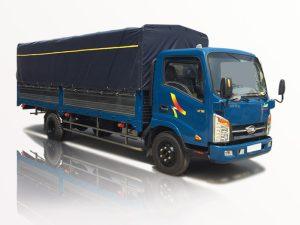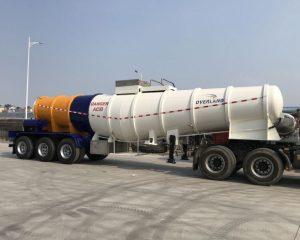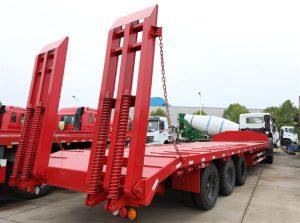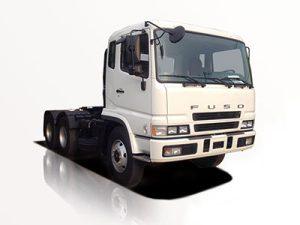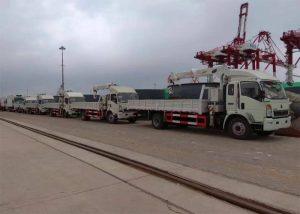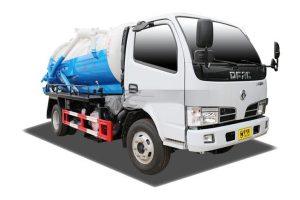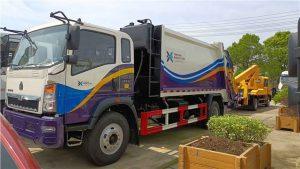Monday to Saturday - 8:00 -17:30
Ultimate Guide to Cherry Picker Trucks: Features, Uses, and More
Introduction
A cherry picker truck, also known as a bucket truck or aerial lift, is a crucial tool utilized in various industries for high-reaching tasks. Whether you are involved in tree maintenance, electrical work, or construction, a cherry picker truck provides the height and versatility needed for safe and efficient operations. This guide explores everything you need to know about cherry picker trucks, including their features, types, uses, safety measures, and tips for operation.
What is a Cherry Picker Truck?
A cherry picker truck combines a bucket lift with a truck chassis, allowing operators to reach significant heights safely. The mechanism consists of a hydraulic arm that elevates a bucket where workers can stand while performing tasks at height. Depending on the model, cherry picker trucks can reach heights ranging from 30 to over 100 feet.
Brief History of Cherry Picker Trucks
The concept of elevating workers to perform tasks has been around since the early 20th century. The invention of hydraulic systems greatly improved the safety and efficiency of these machines, leading to the development of modern cherry picker trucks capable of lifting heavy loads and accommodating multiple operators.
Types of Cherry Picker Trucks
Cherry picker trucks are classified based on their design, height capabilities, and specific applications. Here are some common types:
1. Telescoping Aerial Lifts
These lifts utilize a telescoping boom, allowing for extended reach. They are ideal for applications requiring maximum elevation.
2. Articulating Aerial Lifts
Articulating lifts have multiple sections that bend and pivot. This design allows them to navigate obstacles and reach tight spaces, making them useful for tree trimming or utility work.
3. Trailer-Mounted Cherry Pickers
As the name suggests, these units are mounted on trailers, providing increased mobility. They can be towed by a vehicle and are often lighter, making them suitable for less demanding applications.
4. Bucket Trucks
Bucket trucks are specifically designed for utility work, allowing workers to access power lines, telecommunications infrastructure, and streetlights.
Common Uses of Cherry Picker Trucks
Cherry picker trucks find applications across various sectors. Here are some common uses:
1. Tree Maintenance
Tree trimming, pruning, and removal tasks often require workers to reach high branches. Cherry picker trucks enable operators to work safely at elevated heights.
2. Electrical Work
Electricians commonly use cherry picker trucks to reach overhead power lines and service streetlights. They provide secure access for maintenance and repairs.
3. Construction Projects
In construction, these trucks allow workers to install, inspect, and maintain building facades, roofs, and high ceilings efficiently.
4. Signage Installation
Companies often use cherry picker trucks to install signage on buildings, billboards, and other structures, ensuring the signs are securely placed at heights.
Key Features of Cherry Picker Trucks
When considering a cherry picker truck, certain features are vital for performance and safety. Here are some essential characteristics:
1. Height Capacity
The maximum height a cherry picker truck can reach is one of the critical specifications. Depending on the job requirements, it is essential to choose a truck that can reach the necessary height.
2. Weight Capacity
Understanding the maximum weight the bucket can hold is crucial for safety. This rating influences the number of operators and equipment that can safely work from the bucket.
3. Reach and Outreach
Reach refers to the horizontal distance the cherry picker can extend from the base. This feature is essential for applications involving obstacles, such as tree limbs or building structures.
4. Power Source
Cherry picker trucks can be powered by diesel, gasoline, or electricity. The choice of power source affects performance, fuel efficiency, and maintenance costs.
5. Control Mechanisms
Modern cherry picker trucks often have sophisticated control systems, allowing precision operation of the lift function, swivel movement, and more.
Safety Measures and Best Practices
Safety is paramount when operating cherry picker trucks. Here are several guidelines to ensure safe use:
1. Regular Inspections
Conduct regular inspections of the cherry picker to ensure all components, including hydraulic lines, brakes, and safety features, are functioning correctly.
2. Operator Training
All operators should undergo training to understand the controls and safety protocols associated with cherry picker operations.
3. Use of Personal Protective Equipment (PPE)
Workers should use appropriate personal protective equipment, including hard hats, harnesses, and non-slip footwear when operating or working from cherry pickers.
4. Ground Conditions
It’s essential to assess the ground conditions where the cherry picker truck will be deployed. Ensure the area is stable and free of obstructions before setting up the equipment.
5. Follow Manufacturer Guidelines
Always adhere to the manufacturer’s specifications and guidelines regarding load limits, operational procedures, and maintenance recommendations.
Tips for Renting or Buying Cherry Picker Trucks
Considering the investment involved in purchasing or renting a cherry picker truck, here are some tips:
1. Assess Your Needs
Determine the primary tasks you’ll be using the cherry picker for to choose the right model and specifications that meet your needs.
2. Compare Prices
When looking to rent or buy, compare prices from different suppliers to ensure you get the best deal. Look for additional costs, such as delivery charges or required insurance.
3. Check for Additional Features
Some cherry pickers come with additional features such as extendable platforms, power outlets, or built-in lights. Evaluate these options based on your specific applications.
4. Review Customer Feedback
Reading customer reviews can provide insights into the reliability and functionality of specific cherry picker models, helping you make an informed decision.
5. Inquire About Warranty and Support
Whether renting or purchasing, check the warranty offered and the availability of customer support from the supplier.
Cost Considerations for Cherry Picker Trucks
Understanding the cost factors associated with cherry picker trucks can help in budgeting and forecasting expenses.
1. Purchase Costs
Prices for cherry picker trucks vary widely based on model, height capacity, and features. A new, high-end model can range from $50,000 to over $100,000, whereas used units might be significantly less.
2. Rental Costs
When renting, costs typically range from $200 to $1,500 per day, depending on the type and model of the cherry picker. Long-term rentals may offer discounts.
3. Maintenance and Operating Costs
Regular maintenance is necessary to ensure the safety and longevity of cherry picker trucks. Budget for routine inspections, repairs, and necessary parts replacement.
4. Insurance
Liability insurance is crucial when operating cherry picker trucks, especially for businesses. Costs may vary based on usage and risk levels.
Cherry Picker Truck Regulations and Compliance
When operating cherry picker trucks, compliance with local and federal regulations is critical. Key points include:
1. OSHA Regulations
The Occupational Safety and Health Administration (OSHA) sets standards for aerial lifts, emphasizing operational safety and maintenance procedures. Be familiar with these standards to ensure compliance.
2. State-Specific Laws
Local regulations may impose additional requirements. Research any state-specific laws regarding the operation of cherry picker trucks to avoid legal issues.
FAQs
1. How high can cherry picker trucks reach?
The reach of cherry picker trucks varies from model to model, typically ranging from 30 to over 100 feet. Always check the manufacturer’s specifications for exact heights.
2. Are cherry picker trucks safe to use?
When properly operated and maintained, cherry picker trucks are safe for height work. Following safety guidelines and manufacturer instructions is essential to minimize risks.
3. Can I rent a cherry picker truck for personal use?
Yes, many rental companies offer cherry picker trucks for personal projects. Ensure you have the necessary training and insurance if required.
4. What is the cost of renting a cherry picker truck?
The cost of renting a cherry picker truck ranges from $200 to $1,500 per day, depending on the model and rental duration. Long-term rentals may provide cost savings.
5. What training do I need to operate a cherry picker truck?
Operators should complete safety training focusing on the equipment’s operation, safety protocols, and emergency procedures. Some areas may require certifications.
6. What maintenance does a cherry picker truck require?
Routine maintenance for cherry picker trucks typically includes inspections of hydraulic systems, brakes, and electrical components. Regular servicing helps ensure optimal performance and safety.


